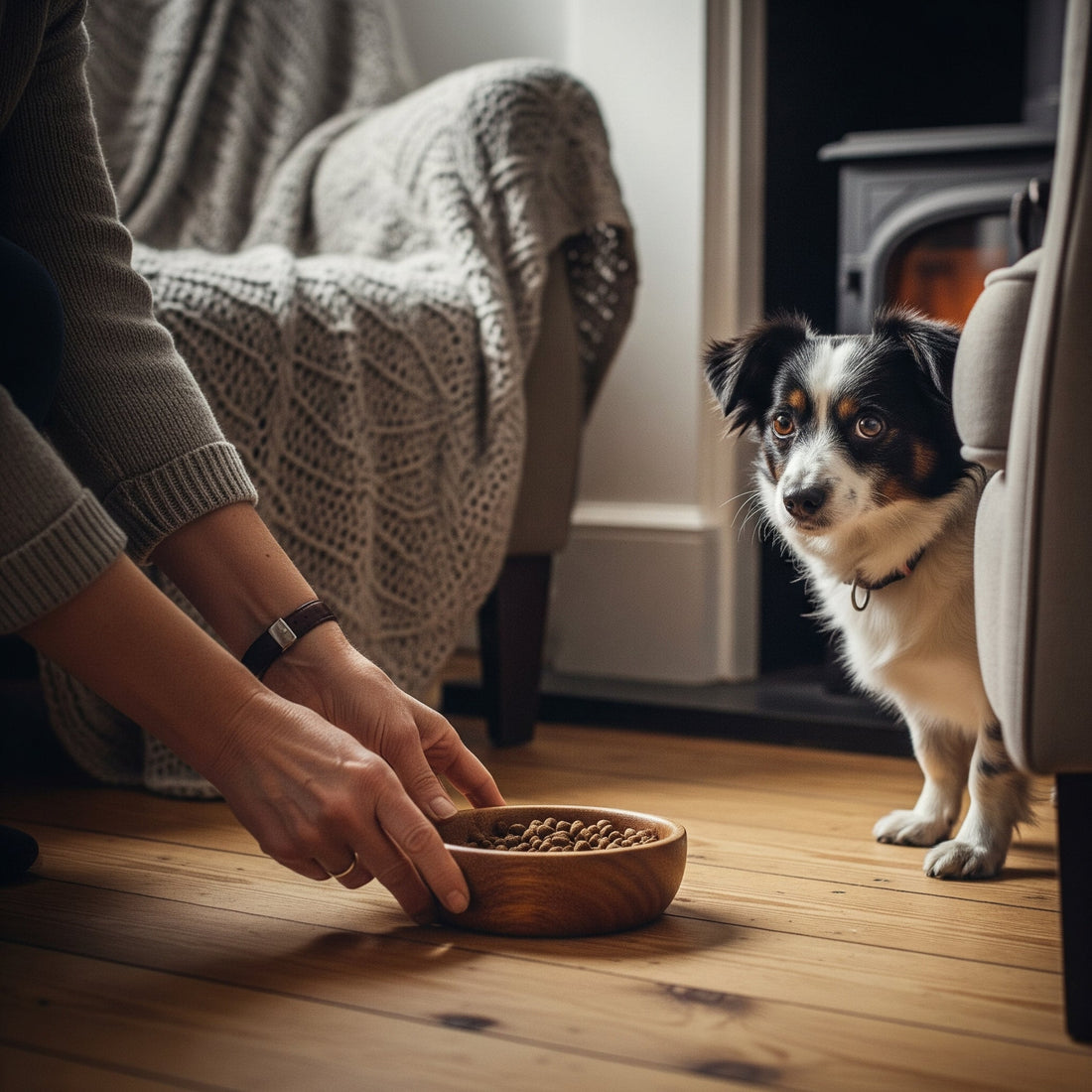
Welcoming a Rescue Dog: A Guide to Their First Meals
Share
Bringing home a rescue dog is one of the most rewarding experiences a person can have. You are opening your heart and your home to a dog who needs a second chance, and the love they give back is immeasurable.
The first few days and weeks are a whirlwind of excitement, adjustment, and learning. As you get to know your new companion, one of the first questions you'll face is about food. What should you feed them? What if they won't eat?
A rescue dog's history with food can be complicated. They might be anxious, underweight, or simply overwhelmed by their new surroundings. A gentle, patient approach to their first meals is crucial for building trust and helping them feel safe and secure in their new forever home.
The Golden Rule: Patience and The "3-3-3" Rule
Before we talk about food, we need to talk about time. Animal rescue organizations often refer to the "3-3-3 Rule" for a new dog's adjustment period:
- 3 Days: Your new dog will likely feel overwhelmed, scared, and unsure. They are decompressing.
- 3 Weeks: They start to settle in, learn your routine, and let their true personality emerge.
- 3 Months: They finally start to feel completely at home and build a true bond with you.
It is completely normal for a rescue dog to have little to no appetite during those first few days. Their world has been turned upside down. Don't panic if they turn up their nose at their bowl.
Step 1: Gather Intel from the Shelter
When you adopt your dog, ask the shelter staff as many questions as you can about their eating habits.
- What brand and type of food were they eating at the shelter?
- What was their feeding schedule? (e.g., twice a day, free-fed)
- Did they have any known allergies or sensitivities?
- Were they a social eater or did they prefer to eat alone?
This information is your starting point.
Step 2: Stick with What's Familiar (For Now)
Your first instinct might be to immediately switch them to a super-premium, high-quality food. Resist this urge! The stress of a new environment combined with a sudden diet change is a recipe for digestive upset.
For the first 2-3 weeks, it's best to continue feeding them the exact same food they were eating at the shelter. This provides a crucial element of consistency in their otherwise chaotic new world. You can focus on upgrading their diet later, once they've settled in.
Step 3: Create a Safe Dining Space
Your new dog has no idea if the other pets or people in the house are a threat. They need to know their food is safe.
- Feed them in a quiet, separate space, like their crate (if they're comfortable with it) or a closed-off room.
- Ensure other pets and children do not bother them while they are eating. This helps prevent resource guarding from developing.
- Use the same schedule every day to build that all-important routine.
Step 4: Enticing a Reluctant Eater
If your new dog is still hesitant after a few days, here are some gentle ways to encourage them.
- Add Warm Water or Broth: A splash of warm, low-sodium bone broth can make the familiar kibble smell much more appealing.
- Try Hand-Feeding: Sit on the floor near the bowl and offer a few pieces of kibble from your hand. This is a non-threatening way to build trust and a positive association between you and food.
- A Tiny, Tasty Topper: A very small spoonful of plain, canned dog food mixed into their kibble can sometimes be enough to get them started.
The most important thing is to remain calm and patient. Once your rescue dog feels secure and has settled into their new routine, you can start to think about elevating their meals. When you do decide to introduce new, healthy homemade toppers, a sprinkle of a delicious seasoning like Clean Plate K9 can be a wonderful way to show them they’ve truly hit the jackpot. It reinforces the message that they are in a safe, loving home where good things happen and the food is always delicious.
Sources:
- "The 3-3-3 Rule for Rescue Dogs." The Humane Society of the United States, humanesociety.org/resources/3-3-3-rule-rescue-dogs.
- "Bringing Your New Dog Home." Best Friends Animal Society, resources.bestfriends.org/library/bringing-your-new-dog-home.
- "Tips for the First 30 Days of Dog Adoption." Petfinder, petfinder.com/pet-adoption/dog-adoption/tips-for-first-30-days-dog-adoption/.
